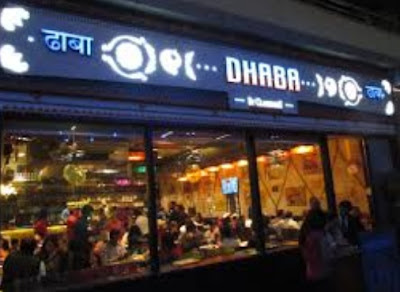Whenever I go to any restaurant that serves up some of the best north indian cuisine in delhi, and a basket of naan is placed in front of me, I just cannot help but feel like a crazed salivating dog! Yes, there’s something just undeniably alluring about naan, our beloved bread of choice. I’m sure I could live a happy life eating naan with just about anything –as long as there’s naan, happiness is guaranteed!
Recently, I visited dhaba by claridges saket –only to be blown away yet again by the glory of the naan! But it left me wondering… Where did this glorious piece of bread originate? What is its story? Call me crazy, but sitting in that comfortable and colourful décor, with its funky yet authentic ‘Dhaba’ vibe going about –I decided to whip out my phone and dig a little deep to find out all about the history of the naan.
If you think about it, would north indian cuisine in delhi or anywhere across the globe survive without the existence of naan? I think not –it’s integral to a variety of cuisines, and my life, of course! So, let me fill you in on what I found out –naan is awesome and doesn’t need any researching into because it’s so great that one must only enjoy the taste and ask no questions. Okay, maybe that’s my salivary gland talking. Let’s get down to business.
The naan originated in former Persia –now Iran. The word itself comes from the Persian word ‘non’ meaning bread. While the word ‘non’ was used generically for any flatbread in Persia, the first recorded history of the naan as it is today was by Indo-Persian poet Amir Khusrow around 1300 AD. And thus began the glorious journey of the naan around the world –to become a widely beloved type of bread. From the plain old naan circulating around Persia back in the day, to the delectable varieties of naan served up at restaurants like dhaba by claridges saket, the naan is a favourite worldwide!
Recently, I visited dhaba by claridges saket –only to be blown away yet again by the glory of the naan! But it left me wondering… Where did this glorious piece of bread originate? What is its story? Call me crazy, but sitting in that comfortable and colourful décor, with its funky yet authentic ‘Dhaba’ vibe going about –I decided to whip out my phone and dig a little deep to find out all about the history of the naan.
If you think about it, would north indian cuisine in delhi or anywhere across the globe survive without the existence of naan? I think not –it’s integral to a variety of cuisines, and my life, of course! So, let me fill you in on what I found out –naan is awesome and doesn’t need any researching into because it’s so great that one must only enjoy the taste and ask no questions. Okay, maybe that’s my salivary gland talking. Let’s get down to business.
The naan originated in former Persia –now Iran. The word itself comes from the Persian word ‘non’ meaning bread. While the word ‘non’ was used generically for any flatbread in Persia, the first recorded history of the naan as it is today was by Indo-Persian poet Amir Khusrow around 1300 AD. And thus began the glorious journey of the naan around the world –to become a widely beloved type of bread. From the plain old naan circulating around Persia back in the day, to the delectable varieties of naan served up at restaurants like dhaba by claridges saket, the naan is a favourite worldwide!

No comments:
Post a Comment